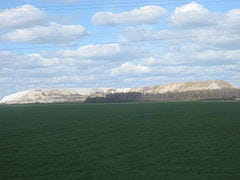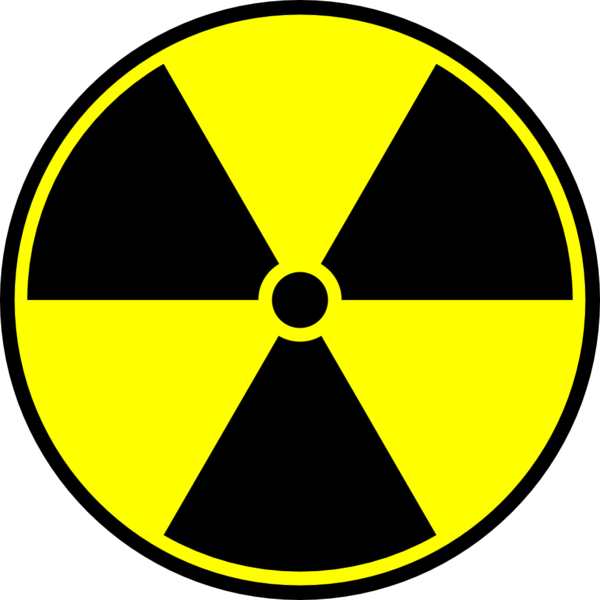Gypstacks, Florida's Potential Environmental Nightmare, Part I
The search for a solution for a problem the size of a mountain. First of a 2-part series
Driving through Florida you can sometimes see the lovely snow-capped mountains in the distance. What? Snow-capped mountains in a subtropical state where the highest point is 345 feet above sea level? The mountains you’re seeing are gypstacks, a very real environmental hazard that’s not being currently addressed.

Gypstacks, also known as gypsum stacks, are byproducts of the phosphate fertilizer industry and primarily consist of waste gypsum. When phosphate rock is mined sulfuric acid and water is added to separate the phosphate from the surrounding rock the reaction produces phosphoric acid that’s sold to make fertilizer. The waste product is called phosphogypsum. Five tons of phosphogypsum is produced for every ton of phosphoric acid.
And then what happens to the phosphogypsum waste product is — nothing. It’s stacked in huge piles. These piles can be up to 520 feet high, as tall as a 50 story building. There are roughly 25 of these stacks in Florida and about 45 elsewhere in the US.
Major accidents from gypstacks seem to occur every few years. The last big one was Piney Point:
On March 25, 2021, leaks were discovered in the containment wall of a 77-acre pond holding approximately 460 million gallons of wastewater at a former phosphate plant at Piney Point, Florida, about 20 miles south of Tampa. To prevent a collapse of the stack containment walls holding back wastewater, the Florida Department of Environmental Protection (FDEP) approved a controlled discharge from the site into Port Manatee.
Here’s a news report of that incident:
In 2016, one of the deepest sinkholes ever recorded in Florida opened beneath Mosaic's New Wales Plant in nearby Mulberry, in southwest Polk County. More than 200 million gallons of polluted water spiraled into the underground aquifer. It took the company two years to seal the opening.
Here’s a video about the Mulberry disaster:
And there are many others over the years.
In 2004, high winds from Tropical Storm Frances whipped up waves atop a 180-foot-tall gypsum stack at Mosaic's phosphate plant in Riverview. The waves bashed a big hole in the dike around the pond, sending 65 million gallons of polluted water into Archie Creek, which flows into Hillsborough Bay. Untold numbers of fish were killed, along with acres of mangroves and seagrass.
At Piney Point in 2001, after owner Mulberry Phosphates went belly up, thousands of gallons of ammonia-laden waste poured from the stack into ditches leading into one of the prime breeding areas for fish and marine life in Tampa Bay.
In 1997 a dam atop a gypsum stack at a Mulberry Phosphates fertilizer plant broke during heavy rains, spilling 56 million gallons of acidic wastewater into the North Fork of the Alafia River. Virtually everything in the 42 miles between Mulberry and Tampa Bay was killed - including more than 1 million fish. The company declared bankruptcy and shut down.
These are not minor environmental issues. Each of these and other disasters kill millions of fish if they get into streams and pollute groundwater for miles around.
So gypstacks are huge and apt to occasionally cause immense environmental damage. But why can’t the gypsum be used? After all, gypsum has hundreds of uses around the world. A few common uses include:
Drywall/Plasterboard: One of the most prevalent uses for gypsum is in the production of drywall, also known as plasterboard or wallboard. These panels are used in construction as interior walls and ceilings because they are fire-resistant, soundproof, and easy to install.

Gypsum Drywall. Picture via Wikimedia Commons Plaster: Gypsum can be heated to remove water molecules, turning it into a powder called plaster of Paris. When mixed with water, this plaster becomes malleable and can be molded, which then sets into a hard solid. This property is utilized for creating casts, molds, and sculptures.
Agriculture: Gypsum is used as a soil conditioner in agriculture. It can improve soil structure, increase water infiltration, and alleviate soil compaction. Moreover, gypsum is a source of calcium and sulfur for plants and can help rectify alkaline soils.
Food Additive: Gypsum is sometimes used in the food industry as a coagulant in products like tofu and as a dough conditioner in baking. It's also used as an additive in certain beverages.
Medical and Dental: Plaster of Paris, derived from gypsum, is used for making dental molds and casts. It's also utilized in orthopedics to make immobilizing casts for broken bones.
There are literally thousands of uses for gypsum. But the gypstacks weighing millions of tons can’t be used for any product. The reason: Gypsum from Florida is radioactive.

I’ll stop there. A longer discussion of the radiation is needed, but that ties into what needs to be done (and I’ll argue will eventually be done). The gypsum stacks are an environmental problem that needs to be addressed. And with major disasters happening about 3 times per decade eventually the political pressure do fix the problem will come eventually. In the conclusion to this article I’ll talk about radiation levels and how that ties into potential solutions.
